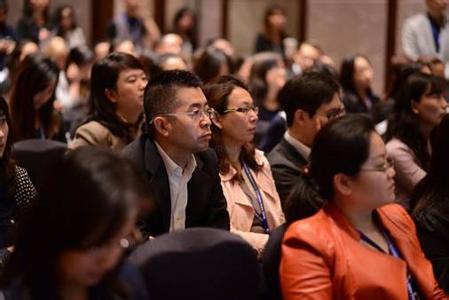Market research China: corporate training outsourcing in Shanghai
The market research has been conducted to give a rough estimation of the market size of corporate training in Shanghai for SOEs (State Owned Enterprises). Such “corporate training” refers to those can be outsourced by enterprises to training outsourcing companies.
What is corporate training outsourcing?
Corporate training is often competency based and related to the essential training employees need to operate certain equipment or perform certain tasks in a competent, safe and effective manner. The primary role is to ensure an employee has the knowledge and skills to undertake a specific operation to enable an organization can continue to operate. Certain companies create customized training plans for client companies, Corporate Training outsourcing, including registration, logistic back-up, curriculum design, program management and class assessment etc.
Demand for corporate training outsourcing is growing in shanghai
The SOEs in Shanghai can be possibly divided according to different industry features and thus have distinct demand for corporate training. Therefore, it is essential to group all the SOEs after figuring out all the potential demand for corporate training.
Our market research mainly focus on the corporate side and look at features of different enterprises which determine their need for corporate training: (boldface shows key words)
- Enterprises are on the “up-curve” and have strategic plans for the coming years. They try to either search for proper talents to fill the job demand or need corresponding corporate training to train more capable employees.
- Enterprises are seeing from their own performance appraisal report or competency model (a model that fully evaluates inner motivation, knowledge skills, self-image and social role characteristics) and find the reasons of bad performance and shortcomings of employees to see whether training demand is emerged.
- Enterprises that have recruited a great number of freshmen, fresh graduate for instance, or new coming employees need systematic induction training.
- Enterprises own a great number of grass-roots employees such as piece workers who require standardized qualification and need corporate training on a large scale.
- Enterprises that are small or medium sized or have immature corporate structure urge to concentrate on immediate production growth and cost minimization, so immediate outsourced training services are in bad need.
- High-tech enterprises that take special social and political responsibility, offer public services and have close connection with government, such as information networks, public transportation, grain reserves, usually own their systematic internal training programs and do not need to outsource for its most secret sections but outsource for other purposes like team building or team cohesiveness.
For simplicity and rough estimate, we conduct our market research by leaving out consideration of the second type enterprises whose demand for corporate training are mainly based on enterprises’ own growth and development needs, which are also determined by other not representative internal and external factors.
In government’s perspectives, SOEs in Shanghai are divided according to their different functions:
- Competitive enterprises: market oriented and the aim is mainly to maximize the profits, earn competence and market power, better if social welfare improves.
- Functional enterprises: occupy national special resources; mainly keep up accomplishing assigned ad-hoc and strategic tasks like achieving technical improvement, infrastructure improvement.
- Public services enterprises: aim to maximize social welfare; guarantee city stability and normal operation and essential public services, such as public transportation, environment protection and water supply etc.
Combined with the demand analysis, pre-market research and typical enterprise categoriesabove, SOEs that need general corporate training outsourcing in Chinaare roughly divided below according to business size, industries and development phases:
- Competitive enterprises that are still at their growing stage in China
- Large companies that regularly outsource corporate training
- SMEs concentrate more on training but with less capital invested in than large companies.
Apart from the above enterprises, functional enterprises and public service enterprises require more specified training outsourcing services:
- For functional enterprises, they call for team building and enterprise culture construction related training to enhance team cohesiveness.
Reason: such enterprises require great unity and team cohesiveness to reach the targeted goal. Corporate training should be adapted to this goal.
- For public service enterprises, they call for service standardization related training, except for too professional skills and services.
Reason: such enterprises perform to serve the country and a set of standard and scientific operation and service line is extremely significant, except for too professional skills and services.
Methodologies used for this market research in Shanghai
Our market research’s goal was to find out the total number of SOEs in Shanghai and the equivalent GDP shares in different groups. We need to find out the types of companies which have most demand on corporate training in China, how often the training services will be purchased by the same company in a certain period (one year), how soon the company will repurchase the product, how much on average each service package costs and finally evaluate different groups in this similar way. Addition to the traditional way of calculating the market size, we tend to consider mostly its substitutes, such as internal training programs. The basic and general computing method is:
The number of target enterprises X the purchase per enterprise in a year X the unit price of corporate training outsourcing service / purchase frequency = rough estimate of market size for corporate training outsourcing
The target enterprises will be divided into SMEs and large SOEs and the two sets are divided again according to their different functions. Therefore, Shanghai’s companies will be divided into 6 groups (match the calculation in the next section):
- large competitive enterprises
- large functional enterprises
- large public service enterprises
- medium and small competitive enterprises
- medium and small functional enterprises
- medium and small public service enterprises
With minor adjustment to the figures we work out –the adjustment for existing substitutes, we can get a rough estimation of the market size in Shanghai.
Market research’s key finding and analysis of corporate training market in Shanghai
Note that all the numbers above was based on Shanghai economy in 2011.
- GDP of SOEs is measured at 20% of overall GDP in Shanghai, up to 400 billion RMB.
- The distribution of three typical types of SOEs is derived by 42 representative SOE sample in Shanghai.
So the rough estimated proportions of three types are:
- competitive enterprises: 71.4%
- functional enterprises: 19.1%
- public service enterprises: 9.5%
- The average cost of corporate training outsourcing of large SOEs are about 2% of their GDP and the cost contains internal corporate training. If SOEs assign a large part of training outside the company, we can give an approximate estimation of corporate training outsourcing costs of about 1.0-1.5% (excluding the internal training programs). For smaller companies and companies at their growing stages, the costs could be slightly lower, which is estimated to be around 1.0% (we try to ignore the difference that the smaller growing enterprises make, to regard all these kinds of firms as 1.0% of GDP).
- The frequency to outsource for SOEs is lower than 1 product per year. For simplicity, we take 1 per year as the case.
- Based on previous analysis on the demand of different types of corporate training, we simply take general training as 1 unit of training at a time, and specified training for functional and public service trainings are respectively 0.5 in proportion.
- The scale of large SOEs is measured mainly by GDP, at least grow over 300 million RMB, taking up over 70% of all SOEs. However, for most of public service enterprises, the bottom line is 150 million RMB, taking up nearly 100% of all public enterprises. (National policy, 2003)
Therefore, to take full advantage of all the statistics and rough estimation, we could calculate the upper bound of market size group by group (characterized in Methodology):
400*71.4%*70%*1.5%*1/1+400*71.4%*30%*1%*1/1+400*19.1%*70%*1.5%*0.5/1+400*19.1%*30%*1.0%*0.5/1+400*9.5%*70%*1.5%*0.5/1+400*9.5%*30%*1.0%*0.5/1=4.63 billion RMB
The lower bound of market size:
400*71.4%*70%*1.0%*1/1+400*71.4%*30%*1%*1/1+400*19.1%*70%*1.0%*0.5/1+400*19.1%*30%*1.0%*0.5/1+400*9.5%*70%*1.0%*0.5/1+400*9.5%*30%*1.0%*0.5/1=3.43 billion RMB
Great potential in corporate training outsourcing in Shanghai
Given the statistics and market research data above, we reach the conclusion that the market size for corporate training in Shanghai for SOEs is roughly estimated within 3.43 ~ 4.63 billion RMB, which takes up on average 0.86% to 1.16% of the GDP of SOEs enterprises, equivalent to 0.17% to 0.23% of total GDP in Shanghai. Therefore, it is a large number using the demand analysis and methodology in this report. In other words, we can see great potential in corporate training outsourcing for Shanghai SOEs.
Chinese References
State-owned Assets Supervision and Administration Commission of Shanghai Municipal Government
Sina Finance news:
https://finance.sina.com.cn/leadership/mroll/20130425/162715279645.shtml
Caixin Finance news:
https://china.caixin.com/2013-12-12/100616842.html
Department of finance of Guangdong Province (it shows national policies, applicable to Shanghai’s)
https://www.gdczt.gov.cn/topco/jsbbbz/201011/t20101105_26590.htm






